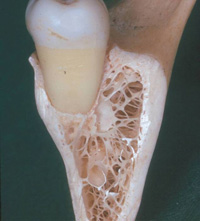As we begin this final article in the “Staff Meeting” series, I suggest a quick review of part 2 (September 2004), which discussed the first 5 Essentials: the rules. This article will describe what actually happens, how the meetings begin, and the powerful conversations that ensue. For me, the thrill of learning happens in the meetings themselves. This is good for business and good for my heart.
And now we begin…
ESSENTIAL 6: ISSUES AND GOOD STUFF
This Essential is how we begin each of our twice-weekly staff meetings, and I believe it is at the very core of their effectiveness and value. The “Issues and Good Stuff” portion elicits the thoughts and feelings of every staff member. It functions as the barometer for the morale of our organization.
We start with the “issues” part of “Issues and Good Stuff,” because it puts our problems on the table. I believe, like Don Corleone in The Godfather, that we should always know the bad news first. It’s a way to clear the air. The particular value of having frequent staff meetings is that they leave very little time for problems to fester and blow out of proportion. In the book Anger, author Thich Nhat Hanh writes that Buddhist monks are allowed to be angry for 24 hours, no longer. We are not monks, but our frequent meetings help us keep corrosive feelings short-lived, therefore minimizing their potentially harmful effects.
We discuss issues of business (housekeeping, etc) and staff (morale, perhaps)—issues that are specific and current, unique to the day or recurring. When I am the facilitator, I try to exclude nonwork-related personal problems, mainly because they lead to psychologizing, and none of us are trained for that work. This is a work meeting, and our charge is to stay office-focused.
Issues are frequently called criticisms in the business and leadership literature, and many writers advocate offering criticism in private. I say, it depends. As the office leader or boss (notice I am still the boss outside of the staff meeting), I frequently will speak to a staff member in private if I think what I have to say is too harsh or exposing. On occasion, I may feel too emotional to raise an issue productively in public—or possibly even in private. (This of course means I have some of my own internal work to do.) But overall, I urge staff to learn how to offer up issues in a public forum, because it is here that, in turn, we learn how to interact authentically with each other. Moreover, we make sure to keep our public criticisms from being personal—following the old bromide, “Criticize the act, not the person.” Developing these skills is key to our growth as individuals and as an organization.
Then we do “good stuff.” The literature often refers to this as appreciation.
These are the small but very special behaviors that frequently go unnoticed. Perhaps we might share a comment made by a patient about a staff member (including the doctor), an act of particular skill or warmth, a terrific phone call, a good conversation with a particularly difficult patient (chairside or at the front desk), or any behavior that we feel is exemplary and helps us all grow. The comments need to be quite specific and related to actions in the office. Generalized comments about skills or about innate goodness (“You really are a good person, Sally!” or “You are really good with people!”) are not nearly as powerful. The reason is that Sally, like all of us, is sometimes good with people and sometimes not, and both Sally and the rest of us know that. So by saying she is “good with people,” we are making a character judgment that isn’t real to everyone listening, perhaps even to Sally. By using both our hearts and our heads, this exercise pays extraordinary dividends. The business literature abounds with stories of employees who change jobs because they feel unappreciated or underappreciated. During “good stuff” we are saying, “We recognize and thank you for your caring and your excellence in specific instances”—a great thing to hear from your coworkers.
For the left-brain thinkers among us, let me share my rationale for this format. “Issues” and “good stuff” are opposite sides of the same coin, and while this isn’t meant to be a lesson in dialectics, working the entire coin provides our meetings with a wonderful sense of a unified and realistic whole. The “issues” component may be easier for those who have grievances—generally we don’t have a lot of trouble finding fault with people or things—but the very label of issues (as opposed to, say, problems or criticism) and our techniques for presenting them (addressing the act and not the person) make it much easier for the person who is the object of these comments to listen. The comments are perceived as much less personal and attacking.
The other side of this metaphorical coin, and actually the side more difficult to access, is the praise side. Having the consciousness and finding the reason to appreciate and praise is not an easy thing to do in a society that is corrosively competitive. This activity requires that we be open and giving. (And generalities will not do.)
ESSENTIAL 7: NO DEFENSIVENESS PERMITTED
This strange-sounding Essential is extremely important, and probably more staff meeting initiatives flounder because of the inability to appreciate it. Without it we have gripe sessions, which can lower morale and reinforce the belief that staff meetings are actually counterproductive. Establishing a no-defensiveness ground rule is necessary for the “issues” and “good stuff” portion of the meeting. The facilitator must assert authority and make the judgment when someone is out of order for being defensive. Without this rule, issues turn into complaints (frequent whining), complaints turn angry, and anger turns into argument (or worse, dead silence). Great to go back to work after one of these, isn’t it?
By definition, to be defensive involves an unconscious thought process that offers protection from a perceived attack. Here is how we change that automatic response. First, take away the attacking quality of the criticism. Remember, if it is treated as an issue, it will therefore not be a personal attack. Second, gently but firmly establish the no-defensiveness rule for all members at all times. (“Yeah right!” you’re probably thinking—but if this behavior is part of the culture of the office and reinforced as such, this nondefensive behavior is possible.) When we remove attacking and defensive behaviors, we are able to listen deeply. When we are not allowed to be self-protective, nor are we required to be smart, we listen in a quite different way. We really listen. This activity, known in the literature as active, empathic, or generative listening, is the basis of all true learning.
“To listen fully means to pay close attention to what is being said beneath the words. You listen to not only the ‘music,’ but to the very essence of the person speaking. You listen not only for what someone knows, but for who he or she is. Ears operate at the speed of sound, which is far slower than the speed of the light the eyes take in. Generative listening is the art of developing deeper silences in yourself, so you can slow your mind’s hearing to your ears’ natural speed, and hear beneath the words to their meaning.” — William Isaacs
ESSENTIAL 8: SUPPORT THE FACILITATOR
The ability to facilitate and foster dialogue is a skill unto itself, and most large organizations will outsource this key role. Small dental offices like many of ours do not have that luxury. Our job then is to train and then to support our own facilitator, and we do that by following the rules of our meeting, the foremost being “Essential 7: No Defensiveness Permitted.” We heed the facilitator’s call that every-one participate and become engaged, that there are no passive observers or meeting bullies. We insist that all staff members are respectful of the meeting process, which, while it may seem to make sense, is often not a behavior observed across all job positions. To implement it fully demands a level of rigor and discipline that takes time to develop. It is far from the norm in the universe of dental practices or even in corporate life generally.
Because the staff meeting is the center of our office culture, a new staff member who is not open to supporting the facilitator will of course, after a reasonable period of training, be found unsuitable for employment. Our conversations can (and upon occasion do) be-come intense. Visitors to our meetings (and I require unan-imous consent to bring a visitor in) have said that we operate at a high level of intimacy. For some, this is way too personal in a work environment. Our philosophy here is that we are responsible for all of us, and we take that responsibility very seriously. Potential candidates for our staff may be great people with outstanding technical skills, but by not being open to this central piece of our office culture, they simply may not be a good fit. Far better to discover the lack of fit early in the process than later down the line, when it is clear to staff that we didn’t do our homework, or worse, didn’t have the courage to act on what we were learning. Active participation by all of us is the main ground rule and the way that we support the facilitator.
I facilitate the Tuesday meeting; the job of facilitator on Thursdays is rotated among the staff. This arrangement has worked well for us because it allows each staff member, many of whom have never done this kind of work before, to experience the difficulties, rewards, and satisfaction of leadership. Because the staff endows the facilitator with a great deal of power and trust, leadership skills can be rapidly developed.
“For those staff members who want to advance their skills as a facilitator, the business bookshelf abounds with information about different ways to support meaningful dialogue, keep on topic, and elicit contributions from all those present. The facilitator helps create an atmosphere of safety.” — Senge
ESSENTIAL 9: LEADERSHIP TRAINING—AN ONGOING TASK
This is perhaps the most contentious Essential. The male-oriented, directive, individualistic, personality-driven leader-ship model is so embedded in the culture of most contemporary societies that collaborative activity is seen as wimpy and indecisive. Be a man, regardless of your gender! Therefore, the resistance to extending leadership capacities among the entire staff can come from both the doctor (as office owner, who sees herself or himself as the font of all wisdom and knowledge) and the staff (who see stepping out as a leader to be very risky business, which it frequently is).
If you were to ask your staff, “Who wants to be a leader?” you may reasonably expect an underwhelming response. No matter. We don’t ask that question any more than we ask, “Who wants to have a staff meeting or who likes a staff meeting?” Staff meetings, quite simply, are not democratic organizational forms; they are rather participatory structures designed to support the growth of a business as they support the growth of the individuals who compose it.
In this day and age, successful organizations place great value on their ability to enhance the self-esteem of their workers. Organizations that ignore this find staff retention almost impossible. Workers need to have self-confidence, the ability to think, and ultimately the feeling that their right to be happy in the workplace is being fulfilled—an environment that supports the need for personal growth. This is the infrastructure upon which success is built. If your office doesn’t meet this need, then your staff will either leave, or worse, perform at a small fraction of its capacity. The days of the automatons and “Do what I say, don’t think, don’t talk back—and most of all, know your place!” are over in all service businesses.
We hire, train, and promote people based on their intelligence, work ethic, integrity, and most of all on their desire to grow. Some writers in the field use the term character to em-body many of these features. It is my job, as the leader of the office, to create a context for growth. I assume that the staff members who embrace (or are at least open to) growth and development as a way of life will in turn help our practice grow. Even more than that, they are the kind of folks I want to work with. They are responsible for their work and for the office as a whole, and they want to develop leadership skills. It is in their interest to think this way.
Everybody, and I mean everybody, has aspirations. Do not try to squelch them. I do not, nor should you, promote the dinosaur leadership model. It is growth-limiting and ultimately suicidal.
“The policies that support self-esteem are also the policies that make money.” — Nathaniel Brandon
ESSENTIAL 10: COMMUNICATION SKILLS ARE KEY
The ability to speak properly and write clearly and effectively is a prerequisite to every-thing that happens in our office, not to mention everything that happens in life. Full, thoughtful, and complete sent-ences, articulated with proper tonal quality, say volumes to your patients about the quality of care that is offered. Excellent customer service is impossible without these skills. We frequently employ role-plays to support the learning of these skills. For example, one staff member plays the role of the caller (an existing or potential patient) and the other staff member plays himself or herself. As the conversation ensues, the entire staff listens to and critiques the dialogue. The advantage of this learning format is that it gives the active players (staff-member-playing-staff-member and the staff-member-playing-caller) a chance to think and talk on their feet, while giving the others a chance to imagine how they would handle the call. This exercise is not for the fainthearted. Shy does not work. In fact, role-playing helps staff members conquer shyness. It’s important to re-member that our patients do not want to do psychological profiles on us, and they don’t really care if a staff member is shy or having a bad day. Patients want to be spoken to properly, competently, respect-fully—and most of all, appreciatively. Every conversation with a patient must convey a genuine sense of “Thanks for calling us.” Every phone call needs to be answered with a smile. Nothing supports the development of staff into superb customer service people as much as regular and rigorous role-plays. Absolutely nothing.
In addition to this in-office learning process, we also provide financial support for education, particularly in the areas of language and communication. We believe in and support most ed-ucational activities of our staff, because we believe that when folks get smarter, they bring this sharpened intellect wherever they go, including our office.
“The road to the heart is in the ear.” — Voltaire
ESSENTIAL 11: ENCOURAGE HUMOR
The preceding Essentials are all pretty intense. I am intense and our office is intense—not grim, mind you, but intense. We work very hard every day to explore areas of care and service that we can improve. We are disciplined and focused about this. But we are able to do this only when we maintain a sense of humor. None of us, especially me, is so high and mighty that we can’t make fun of ourselves. We are human beings, wonderful in many ways, yet fragile and silly in many others. It is important to remember that it is the whole package that makes this work.
“Total absence of humor renders life impossible.” — Colette
Dr. Goldstein is a 1968 graduate of the University of Pennsylvania School of Dental Medicine. He is the immediate past president of the Academy of Laser Dentistry as well as a certified professional coach. He received his certification credential from New Ventures West after taking its 1-year professional coaching course. Dr. Goldstein is a fellow in the American College of Dentists and serves on the Dental Advisory Board of Dentistry Today. He is also a member of the Association for Contemporary Dental Education. Dr. Goldstein maintains both a general dental practice as well a coaching practice in New York City and can be reached at llaama1@mindspring.com or by visiting coachingpractice.com.










